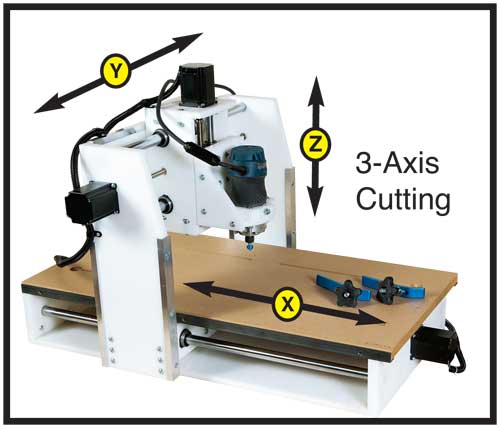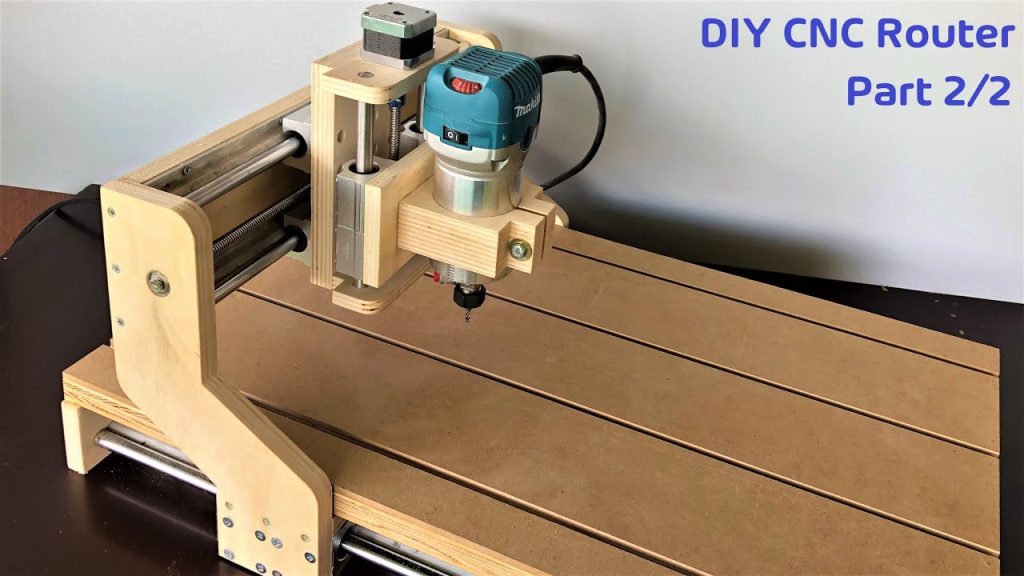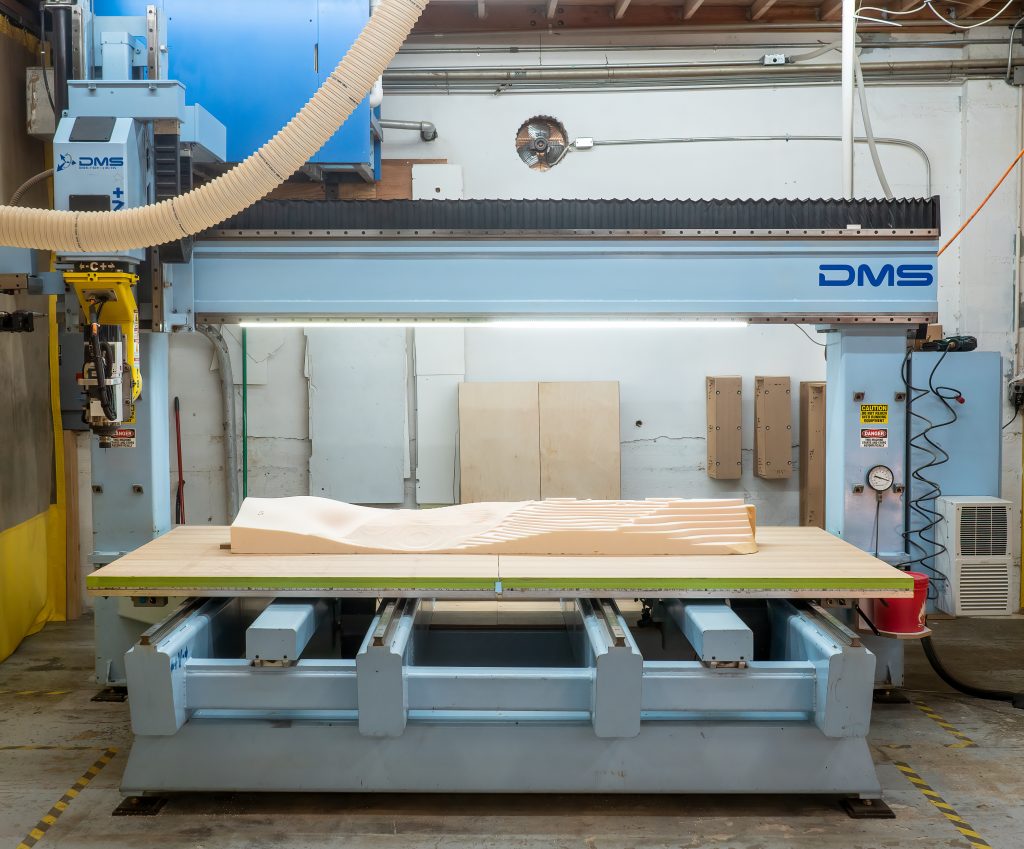Table of Contents
CNC routers are an essential tool for woodworkers, metalworkers, and other artisans who rely on precision cutting and shaping. But can you tap on a CNC router? This question may seem simple, but the answer is more complicated than you might think.
To begin with, tapping on a CNC router can cause serious damage to the machine. These machines rely on precise movements and delicate sensors to function properly, and any sudden jarring or impact can throw them off track. However, there are ways to tap on a CNC router safely and effectively, and understanding these techniques is key to getting the most out of your machine.
Can You Tap on a CNC Router?
When it comes to CNC routers, there are a lot of questions that people have about what they can and can’t do with them. One of the most common questions is whether or not you can tap on a CNC router. In this article, we’ll take a closer look at the answer to this question, as well as explore some of the benefits and drawbacks of tapping on a CNC router.
What is Tapping?
Before we can answer the question of whether or not you can tap on a CNC router, we need to define what tapping is. Tapping is a process that is used to create threads in a material, typically metal. It involves using a tap, which is a cutting tool that is designed to cut threads into a material as it is turned.
The Benefits of Tapping
There are several benefits to tapping, including the ability to create strong, secure threaded connections in metal materials. Tapping can also be a more efficient way to create threads than other methods, such as using a die, which can be more time-consuming and require more skill.
The Drawbacks of Tapping
While tapping has its benefits, there are also some drawbacks to be aware of. One of the biggest drawbacks is that tapping can be difficult to do correctly, especially if you don’t have a lot of experience with the process. Additionally, tapping can be more time-consuming than other methods of creating threads, which can be a significant disadvantage if you’re working on a tight deadline.
Can You Tap on a CNC Router?
Now that we’ve defined what tapping is and explored some of its benefits and drawbacks, let’s answer the question of whether or not you can tap on a CNC router. The short answer is yes, you can tap on a CNC router. However, there are some important considerations to keep in mind.
The Benefits of Tapping on a CNC Router
One of the main benefits of tapping on a CNC router is that it can be a more precise and efficient way to create threads than tapping by hand. CNC routers are designed to make precise cuts, which can help ensure that your threads are uniform and consistent. Additionally, tapping on a CNC router can be faster than tapping by hand, which can be beneficial if you’re working on a large project.
The Drawbacks of Tapping on a CNC Router
While tapping on a CNC router has its benefits, there are also some drawbacks to be aware of. One of the biggest drawbacks is that tapping on a CNC router requires a specific type of tap, which can be more expensive than other types of taps. Additionally, tapping on a CNC router can be more complex than tapping by hand, which means that you may need to have more experience or training to do it correctly.
Tips for Tapping on a CNC Router
If you’re interested in tapping on a CNC router, there are some tips that can help you do it successfully. Here are a few things to keep in mind:
1. Use the Right Tap
As we mentioned earlier, tapping on a CNC router requires a specific type of tap. Make sure that you’re using the right tap for your project to ensure the best results.
2. Set the Right Speeds and Feeds
When tapping on a CNC router, it’s important to set the right speeds and feeds to ensure that the tap is cutting properly. Make sure that you’re using the right speeds and feeds for your material and tap size.
3. Monitor the Process
As with any CNC routing project, it’s important to monitor the process closely to ensure that things are going smoothly. Keep an eye on the cutting process to make sure that the tap is cutting properly and that there are no issues.
Tapping on a CNC Router vs. Tapping by Hand
Finally, let’s take a look at how tapping on a CNC router compares to tapping by hand. Here are some of the key differences:
Speed
Tapping on a CNC router is typically faster than tapping by hand.
Precision
Tapping on a CNC router is typically more precise than tapping by hand, thanks to the precision of the machine.
Cost
Tapping on a CNC router can be more expensive than tapping by hand, due to the cost of the specific type of tap that is required.
Experience Required
Tapping on a CNC router typically requires more experience and training than tapping by hand.
In conclusion, tapping on a CNC router can be a great way to create precise, uniform threads in metal materials. While there are some drawbacks to be aware of, tapping on a CNC router can be faster and more efficient than tapping by hand. If you’re interested in tapping on a CNC router, be sure to follow the tips we’ve outlined here to ensure the best results.
Frequently Asked Questions
Here are some frequently asked questions related to tapping on a CNC router.
Can you tap on a CNC router?
Yes, you can tap on a CNC router. Tapping is a process of creating threads in a hole by cutting threads into it. The process is also called internal threading or cutting threads. Tapping can be done manually or with the help of a CNC router.
When tapping is done with a CNC router, the process is fully automated. The CNC router is programmed to move the tapping tool into the hole, cut the threads, and retract the tool. The tool used for tapping is called a tap. It is a cutting tool with threads on it that match the threads to be cut.
What are the advantages of tapping on a CNC router?
There are several advantages of tapping on a CNC router. First, the process is fully automated, which means that it is faster and more accurate than manual tapping. Second, the CNC router can tap holes at any angle, which is not possible with manual tapping. Third, the CNC router can tap holes of different sizes and shapes, which is also not possible with manual tapping.
Fourth, the CNC router can tap multiple holes at once, which makes it more efficient than manual tapping. Fifth, the CNC router can tap materials that are difficult to tap manually, such as hard metals or composites. Overall, tapping on a CNC router is a more efficient, accurate, and versatile process than manual tapping.
What are the limitations of tapping on a CNC router?
There are some limitations of tapping on a CNC router. First, the tapping tool needs to be replaced more frequently than other cutting tools, which can increase the cost of the process. Second, the tapping tool needs to be lubricated during the process to reduce friction and heat, which can cause wear and tear on the tool and the machine.
Third, tapping on a CNC router can cause chips and debris to accumulate in the hole, which can affect the quality of the threads. Fourth, tapping on a CNC router requires a certain level of programming and technical expertise, which can be a limitation for some users. Overall, while tapping on a CNC router has many advantages, it also has some limitations that need to be considered.
What is the tapping cycle on a CNC router?
The tapping cycle on a CNC router is a series of commands that the machine follows to perform the tapping process. The tapping cycle includes several steps, such as moving the tool to the hole, positioning it, and starting the tapping process.
During the tapping cycle, the CNC router controls the speed and depth of the tool, as well as the amount of lubrication used. The tapping cycle can be customized to match the specific requirements of the project, such as the size and type of hole, the material being tapped, and the desired thread pitch.
What are some tips for tapping on a CNC router?
Here are some tips for tapping on a CNC router. First, make sure that the tapping tool is sharp and in good condition before starting the process. Second, use the appropriate lubricant for the material being tapped to reduce friction and heat. Third, use a tapping cycle that matches the requirements of the project and the material being tapped.
Fourth, monitor the process closely to ensure that the threads are being cut accurately and that there are no chips or debris in the hole. Fifth, replace the tapping tool regularly to ensure consistent quality and avoid damage to the machine. By following these tips, users can ensure a successful and efficient tapping process on a CNC router.
In conclusion, tapping on a CNC router is not recommended as it can damage the machine and compromise the accuracy of your work. While it may seem like a quick and easy solution, it’s important to follow proper procedures and use the appropriate tools for tapping.
Instead of tapping on the CNC router, consider using a tapping attachment or hand tapping tools to achieve the desired results. These tools are designed specifically for tapping and will prevent any damage to the machine.
Remember, taking shortcuts can often lead to bigger problems down the line. By following the proper procedures and using the right tools, you can ensure the longevity and accuracy of your CNC router for years to come.
Request a quote today!
[contact-form-7 id="1578" title="Contact form"]
Please compress the file into a ZIP or RAR file before uploading. Alternatively, send through your RFQ by email.
enquires@unitymanufacture.com





